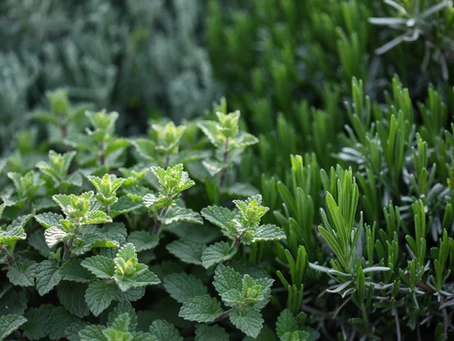
Water Content versus Water Potential
With any wet material such as soil or plant tissue, there are two important properties related to water. Water content is how much water the material holds, expressed as 30% water or 0.3 grams of water per cubic centimeter of soil. The other is water potential, or how tightly the tissue or material holds the water.
Plants sense and react physiologically to water potential, not water content. Content and potential are related. Unfortunately, the relationship between them is unique for each material or tissue so water content is not a good predictor of potential and plant response unless each unique condition is analyzed in the laboratory.
Water content of soil is useful to estimate amount of water involved, though it is difficult to know just how much of the soil is explored by the plants. But for understanding plant responses to drought, it is far preferable to measure the water potential of the soil or ideally directly in the plant. That is what the FloraPulse microtensiometer can do.
Direct Measurements versus Indirect Estimates of Plant Water Potential
There are many responses of plants to water stress. Stems or fruit may shrink and swell, leaves may lose firmness or later visibly wilt, leaves may heat up in the sun due to pores closing and reducing evaporative cooling. These changes are related to the level of stress, but the relationship to the actual stress are not consistent over time or environment.
There are many methods to measure these tissue changes (infrared thermometer, dendrometers, leaf clamps), but they are measurements of tissue response to stress, not the stress itself, therefore only indirect, variable estimates of the water potential of the plant.
The ideal is to directly measure the actual stress inside the plant as water potential. There are a few methods that do this, but they have major limitations. The most common for the past 50 years is the Scholander pressure chamber, which is an expensive (about $3-8,000), rugged but heavy manual instrument that gives only weekly spot measurements of very dynamic changes in plant water potential. The other current instrument is the Stem Psychrometer, which can monitor continuously the water potential in plant stems. However, this instrument which is very expensive and notoriously inconsistent and touchy is at best a research tool, not a field instrument.
The FloraPulse microtensiometer is a rugged trunk-embedded sensor that has been shown to be able to measure stem water potential in commercial orchard and vineyard settings minute-by-minute for months. Despite the huge increase in valuable data, the cost of the microtensiometer is projected to be a fraction of the cost of either current methods. The monitored data also correlates well with the data that the top growers have obtained with the pressure chamber, so adopters already know what the data means and have developed management based on such data.
Therefore, the FloraPulse microtensiometer has tremendous advantages over other plant sensors in (1) the relevance of direct measurement of plant water potential, (2) the extremely high temporal resolution needed to characterize a dynamic behavior, (3) the ease of use, (4) ruggedness, and (5) much lower cost.
Table 1: Comparison of commonly used techniques to measure plant water status
| Instrument | Measured Parameter | Advantages | Disadvantages |
|---|---|---|---|
| FloraPulse micrtensiometer | Plant Water potential | – Measures plant potential directly and continuously and over months or years – High correlation of stem potential to plant growth and performance as stem potential integrates over whole plant – Easy to operate – Reasonable cost | – Installation is limited by plant wound response – i.e. does not work in all crops – Sensor electronics must be protected thoroughly |
| Pressure Chamber | Plant Water potential | – Measured plant potential directly – Good correlation of stem and leaf potential to plant growth and performance – Simple operation – Rugged | – Manual sampling, very few measurements over time (e.g. 1 per week) – Heavy and bulky – Expensive: ($2500-6,000) plus labor costs – Variation due t operator variation |
| Stem Psychrometer | Plant Water potential | – Measures plant stem potential directly – Amenable to continuous monitoring | – Very difficult to obtain stable readings – Susceptible to temp effects – Not rugged, research only – Very expensive |
| Displacement transducers or leaf clamp | Organ expansion and contraction | – Indirect measure of water status – May be inexpensive but often expensive | – Large errors associated with measurement technique – Unreliable as tissue-stress relations change over time and amongst species – Which organ of many to select as representative sample |

